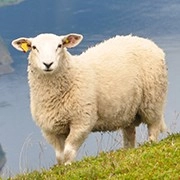Fragrance of Flowers Secrets

The enchanting fragrance of flowers has captivated humans for centuries, but have you ever wondered where this alluring aroma originates?
Flowers produce fragrances as a result of complex chemical processes that serve multiple purposes, from attracting pollinators to repelling herbivores.Dear Lykkers!
Let's find the science behind the delightful scents of flowers and explore why they smell the way they do.
The Science Behind Flower Fragrance
Volatile Organic Compounds (VOCs):
The fragrance of flowers is primarily derived from volatile organic compounds (VOCs), which are small molecules that easily evaporate at room temperature. These compounds are released into the air by flowers, creating the distinctive aromas we associate with them. Flowers can produce hundreds of different VOCs, and each flower has a unique blend that creates its specific scent profile.
Types of VOCs:
The most common types of VOCs responsible for flower fragrances include terpenes, esters, alcohols, ketones, and aldehydes. For example:
Terpenes are often responsible for citrusy and resinous scents.
Esters contribute to fruity and sweet aromas.
Alcohols can provide floral and green notes.
Ketones and aldehydes often create spicy and woody undertones.
These compounds can be produced in varying concentrations, leading to the complex and unique scents of different flowers.
How Do Flowers Produce These Compounds?
Glandular Cells:
The production of VOCs in flowers is primarily handled by specialized glandular cells located in different parts of the flower, such as the petals, sepals, and reproductive organs. These cells have enzymes that help synthesize VOCs from basic cellular building blocks like fatty acids, amino acids, and sugars.
Release Mechanism:
Once produced, the VOCs are stored in small pockets or reservoirs within the glandular cells. They are then released through small openings on the surface of the flower, allowing the compounds to evaporate and disperse into the air, where they can be detected by insects, animals, and humans.
Why do flowers have fragrance | Why do flowers smell good
Video by iQ Rapids

Why Do Flowers Produce Fragrance?
Attracting Pollinators:
One of the primary reasons flowers produce fragrances is to attract pollinators like bees, butterflies, and moths. Different flowers have evolved to attract specific pollinators by releasing scents that appeal to them. For example, flowers that are pollinated by bees tend to have sweet, floral scents, while those that attract flies may emit odors reminiscent of rotting meat.
Repelling Predators:
Certain flowers produce fragrances that act as a natural defense mechanism to repel herbivores and other predators. Some VOCs have anti-microbial or anti-fungal properties, protecting the flower from harmful pathogens.
Signaling Maturity:
Flowers also use scent to signal their reproductive maturity. When a flower is ready for pollination, it may increase the production of its fragrance to attract pollinators more effectively. Conversely, once pollination is complete, the flower might reduce or alter its scent to conserve energy.
The fragrance of flowers is a complex interplay of chemistry, biology, and evolution. From the production of volatile organic compounds by specialized cells to their strategic release into the environment, flowers use scent to communicate, attract, and defend. Whether sweet and floral or earthy and pungent, each fragrance tells a story about the flower’s purpose, its relationship with its pollinators, and its adaptation to the environment.Further you smell a fragrant bloom, remember that there’s a fascinating science behind that captivating aroma!

 · Plant Team
· Plant Team